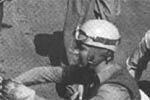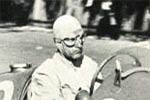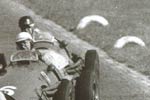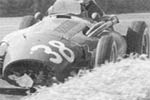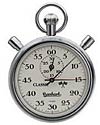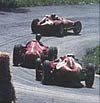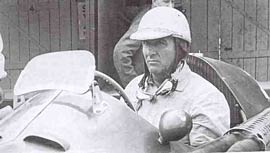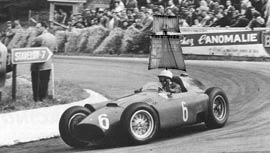
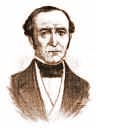
Investigative Journalism at its Best
Atlas F1 Correspondent
As this is my 1000th Fuel Stop, it is considered prudent to take a deep breath and look back at what one has accomplished. I pride myself to have always been the first with breaking news and to have written about subjects that other motor racing journalists have been simply too afraid to even talk about.The 1950s was an exciting decade not only in the history of motor racing, but also in my professional life, as that was the time when I first packed my typewriter instead of my driving goggles and headed out into the unknown.
With that in mind, I would like to present a selection of some of my best-known news items published in the 1950s.
Take care, my dear readers,

|
Ferrari's 1954 challenger the perfect racing car, "no further improvement possible," says management
Ferrari design department closed as optimal car designed
"The Ferrari 625 is the optimal racing car and it would just be a waste of resources to try to make it go any faster," said proud Ferrari manager Gianni Pomposa. "Our competitors in the 1954 Formula One season will be trampled to the ground by this Mona Lisa of racing cars."
Ferrari, who dominated the 1953 season, are sure that the 1954 challenger is an even bigger leap forward than last year's model. Calculations revealed that a faster car would only be possible by rocket propulsion, which is illegal according to Formula One regulations.
"We tested a Ferrari 635 extensively on public roads in Milano and managed a world shattering top speed of 162km/h," said former Ferrari engineer Carlo Tombosi. "I'm sure that we could have managed even more than that but unfortunately our test driver had to hold onto his hat with his left hand due to the enormous speed of this beast of a car."
| |||||||||||
|
The 1953 Season Safety Overview
The 1953 Formula One season promises to be the safest ever, so let's take a look at some of the new regulations the FIA has put in place to promote safety in the sport.
Must be placed gently on the driver's head so as not to crack.
Protect the driver's eyes from dirt, bugs and flying pedestrians. |
 Cost savings Exotic materials plastic and hemp banned from 1953 season and onward
|
||||||||||
| |||||||||||
About the author:
Reginald Kincaid was born on 30th November 1912. Following graduation from the Royal Military College in Sandhurst he was commissioned in the Forth Hussars in February 1931. While stationed in Egypt with his brigade in 1934, he led the famous "Elgar" high speed camel expeditions that explored and documented the vast sand seas of Libya. In his own words he soon after became addicted to the "fine art of travelling fast" but exchanged camels for cars. Kincaid's exploits in European motor racing became legendary after being documented in his best selling biography "Racing with a stiff upper lip". Reginald Kincaid retired in 1991 and has been covering motor racing ever since. He now lives in Surrey, England, and tends to his hobby of beekeeping.
Please Contact Us for permission to republish this or any other material from Atlas F1.
|
(if you must)
Volume 9, Issue 22
Atlas F1 Exclusive
Jos the Way It Is
Giancarlo Fisichella: Through the Visor
Articles
Remembrance of Things Past
Murphy & the Franco-American Special
Season in the Sun III
The Fuel Stop: Special Edition
Monaco GP Preview
The Monaco GP Preview
Monaco GP Facts & Stats
Columns
The F1 Trivia Quiz
Bookworm Critique
On the Road
Elsewhere in Racing
The Weekly Grapevine
> Homepage |
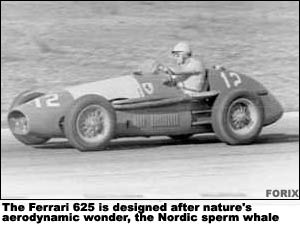 Modena, Italy. The Ferrari car company today closed its design department and sacked all its employees after announcing that they had developed and produced the perfect Formula One car.
Modena, Italy. The Ferrari car company today closed its design department and sacked all its employees after announcing that they had developed and produced the perfect Formula One car.
